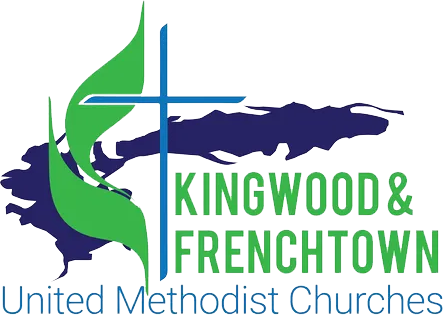PRAYER: God of endless love, lift us from our hopelessness that we may offer love and hope to others. Bring us into a place where we – as your church – may offer a step out of despair. May the words of my mouth and the meditations of all of our hearts be acceptable to you, O God, my rock and my redeemer. Amen.
There is a famous story in the Methodist history books about John Wesley, the founder of the Methodist movement. In the 1730s, Wesley came to America on a mission trip which – by all accounts – was an absolute failure. And in early 1736, he boarded a ship to return to England with his tail between his legs.
During the voyage the ship was caught in a terrifying storm. Wesley was terrified. He prayed with the English passengers, one of whom brought him a baby to baptize in case they were all about to die.
That same night, he was at another service with a group of German Moravians when a huge wave engulfed the ship and water poured down into the cabins. While the English passengers screamed in terror, the Moravians continued singing – men, women and children seemingly untroubled by the circumstances around them.
This moment was transformative for Wesley and it informs the United Methodist theology to this day. The ability – the strength – the seeming calmness to view even the most troubling path in front of you with a sense of grace and peace is a strong element of the United Methodist Church.
I think most of us would agree that it’s one of the hardest things to do – to find some semblance of hope when you’re in the midst of turmoil, when you’re in the middle of a hopeless situation. Lately, this has resonated with us more than I thought it could as Anna and I have been in the midst of what seems to be a never-ending storm. And what I have been coming to learn is that there are basically three responses people may tend to make when faced with situations in which hope is hard to find.
The first is to retreat into a ball of hopelessness. Some people may choose this particular path. It’s not a judgement, but it can be a decision made out of fear. I can understand why some would follow this path. It might include some self-destructive behavior like substance abuse for example. This might have been how a lot of the English who were traveling with Wesley may have felt. They were faced with hopelessness and responded out of fear.
The second is to just put your head down and forge forward as if absolutely nothing is changed. People can often be filled with this determination to not let anything knock them off course. I’m going to get through this, come hell or high water, so I can get back to my life the way it’s always been. There are times when this is a little more my style. But the truth is that when one chooses to follow this path, it requires living in a bit of denial – of not facing the reality that is in front of you.
The third is similar to the second, in that it involves forging forwards, but in this case, where the other response involves putting your head down and living in denial, this one involves keeping one’s head up and looking for new opportunities that might be presented as a result of the change in circumstances. Moving forward and seeking what’s new is a response based in both hope and strength. This is what Wesley saw in the Moravians that night. They had the same grim outlook as all of the other passengers in the midst of that terrible storm, but their response was to pray and to sing, to look up to God for direction… for hope. Their response was to face the hopeless scenario – with hope.
Living in fear is something that can weigh you down, it can push you down into a rabbit hole. While living with a sense of hope will lift you up, will give you the ability to breathe a little easier.
That idea is not really terribly different from the primary science involved in making hot air balloons fly. The physics of air density can either cause something to be pushed down or lifted up. At the most fundamental level, the warmer air is, the less dense it becomes. And less dense air surrounded by more dense air will seek to equalize and rise until the density of the warm air is the same as the rest of the air surrounding it. This is the same science that governs weather and even how the boilers in some of our church facilities heat our buildings.
So many times throughout our lives we find ourselves at one crossroad or another – a point where the air density around us is changing and we must either rise or sink. And that’s where our Christian faith becomes active in our lives because our faith is built upon the premise of finding new life in the midst of death, hope in the midst of suffering.
One place we see this played out often is in our music. Some of the most hopeful words in our hymns come from a surprising place of hardship. Many African American spirituals and the striving texts that emerged from the spirit of the 20th-century social gospel movement are examples of this. The words of uplift in Isaiah are given with the backdrop of exile and loss. The beautiful moments of hope in John in our passage and later passages come as Jesus himself makes it clear where he is headed: crucifixion. The joyful and hopeful words of Paul’s epistle to the Philippians were written when Paul was imprisoned.
The authors of our worship series What R U Up 2 included a hymn called “Love Lifted Me” that was written by an Irish immigrant to the US named James Rowe. When he came to this country, he worked on railroads, and then as an inspector for the Hudson River Humane Society — hardly careers that were easy or free from hardships. In the beginning of this hymn, we can hear the words of challenge – of lost hope:
I was sinking deep in sin,
Far from the peaceful shore,
Very deeply stained within,
Sinking to rise no more…
And from that expression of hardship, he turns to hope:
But the Master of the sea
Heard my despairing cry,
From the waters lifted me,
Now safe am I.
Love lifted me!
To make the air less dense so it becomes buoyant enough to lift the hot air balloon, there must be a lot of heat energy applied. Massive torches in the gondola shoot flames of intense heat into the envelope and lift it. What if the hardships we experience can give us opportunities to really experience the hope that lifts us up? Maybe the kind of hope that reveals the miracles around us needs a little bit of “heat”, needs a little bit of friction to lift us up. That isn’t to say that we should seek out hardship arbitrarily. But I think it does allow us to acknowledge that hardship in our lives, hardships every single one of us faces, can also be opportunities to experience the very hope that can bring us through or out of that hardship.
I think it is very telling that Jesus, in our passage for today, openly indicated “the kind of death he was to die.” And yet in this very grim conversation, he speaks of a deep hope. “And I, when I am lifted up from the earth, will draw all people to myself.” He speaks of the hardship of grain being transformed into fruit. “Unless a grain of wheat falls into the earth and dies, it remains just a single grain, but if it dies it bears much fruit.”
Jesus’ first words about his death weren’t hopeless. They were determined and hopeful, “The hour has come for the Son of Man to be glorified.” He didn’t say “the hour has come for the Son of Man to suffer,” nor did he say “the hour has come for the Son of Man to be crucified.” Jesus points out clearly that glory occurs even in the midst of hardship and death.
In view of this, it affords us the opportunity to view our own selves with a stronger sense of hope. The changes that we face – so often, we lament change and desire for everything to go back to the way things used to be – but those changes are opportunities for us to learn, to grow, to be more than we ever thought possible.
Because of the incident Anna had in December, she’s medically not allowed to drive for another 3 or 4 months; and every time she gets into the passenger seat of her own car, I can feel her wanting to take the wheel, wanting to put the pedal to the medal… But instead, she’s got to rely on me driving her everywhere. It’s frustrating for her, I know. Anna and I were driving to her chemo appointment this past Friday morning. She sat in the passenger seat looking out the window. As she watched the world go by us that morning, she started pointing out the signs of spring. She noticed the yellow forsythia beginning to emerge from its winter hibernation. She celebrated the daffodils that she saw peaking out from the ground. She noticed the pale green of the leaves beginning to emerge.
New life emerges from the cold winter. New life emerges from the crossroads of our despair, and new life offered to us each and every day.
Where you see suffering, where you see heartbreak, where you see sorrow… these are all opportunities to offer hope and new life to others – to demonstrate that the love God calls us to share is one of inclusion and building up. The ministry that we offer in our lives and through this church must always be geared toward offering that hope. When we offer a love that lifts others up, we find that we are, in turn, lifted up as well.
To be lifted up is to be drawn into the love of God. Jesus drew all kinds of people to him during his short tenure on earth, drawing no boundaries for who was invited into that love. As his hour to die drew nearer, he spread the message that all things would be enveloped in his love even after he was gone. What uplifting message will we pass on to others?
We all have sorrow. We all go through seasons of despair. Let us be ever-mindful of that truth in how we share God’s love to others and offer hope to a world that is hurting. Let us continually seek to build bridges of hope and love to our neighbors.
But the Master of the sea
Heard my despairing cry,
From the waters lifted me,
Now safe am I.
Love lifted me!
To God be the glory

